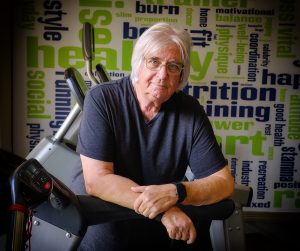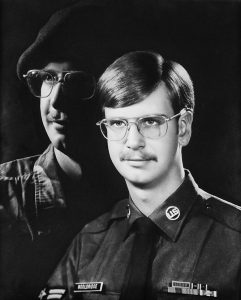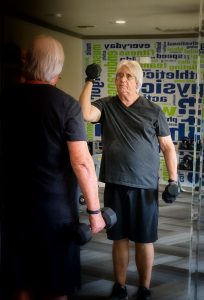‘LEMme Tell Ya’ Patient Stories in Their Own Words: Price Wooldridge
Written by |

This month’s “’LEMme Tell Ya’ Patient Stories in Their Own Words” features a Lambert-Eaton myasthenic syndrome (LEMS) patient I am grateful to call my friend.
Price Wooldridge offers encouragement to newly diagnosed patients, and doesn’t hesitate to brainstorm with someone who is struggling with symptoms. His advice is always calm and reassuring.
I want all LEMS patients to know Price, even if they aren’t involved in an online patient community.
Ask questions and share your knowledge of Lambert-Eaton in our forums.
Here is Price’s story, in his own words:
DD: Tell us about your LEMS diagnosis.
PW: In the summer of 2009, after a series of traumatic, emotional events in my life, I started experiencing rapidly progressive weakness in my hips and legs. Walking quickly became so difficult I was admitted into the VA [Veterans Affairs] hospital. I spent six days there, doing the usual neurological tests. An EMG [electromyography] and spinal tap were done bedside, along with surgery for a muscle biopsy.
On the sixth day, they released me in a wheelchair, with a walker, and home rehab. No diagnosis was ever given. I joined a gym and began to further rehab myself. Symptoms subsided enough for me to continue working.
In 2016, I began experiencing profound weakness again. Two sets of EMG’s were done in the VA, sending the doctors digging into a medical textbook for answers. They sent me to see a neuromuscular specialist. With a clinical evaluation and history, the neurologist suggested on that visit I had LEMS. With a positive blood test from the Mayo Clinic, and a positive single fiber EMG, I got the diagnosis.
After eight years, getting the definitive answer lifted a heavy weight. Now I knew. Now there would be a plan.
As an Air Force veteran, what is it like to navigate the VA healthcare system with a rare disease?
As a military veteran with a service-connected disability, I’m extremely fortunate to get my medical care through the VA healthcare system. The VA system is a vast labyrinth of hospitals, clinics, doctors, and clinicians. It’s easy to get lost in there. I learned early on to be attentive to my needs and proactive when necessary. I’ve found it true: “The squeaky wheel gets the grease.” After getting the LEMS diagnosis, the VA has stepped up and provided all the medications my neurologist has requested, including the very specialized, LEMS specific drug, amifampridine.
What activities do you do, and what challenges has LEMS brought to your activities and hobbies?
I do everything possible to remain active and engaged. LEMS requires assessment and attention every day. Being active provides me with both mental and physical benefits, and a sense of well-being. I keep physically active by walking daily and doing limited weight training in my gym. The keys are consistency and modulating intensity based on my LEMS that day. I also exercise only in the morning, when my energy levels are at their best.
Having retired in part due to my LEMS issues, staying engaged with hobbies is very important to me. As a licensed amateur radio operator, I enjoy using my communication skills with fellow amateurs around the world.
My other passion is photography. The hobby helps me exercise my creative side in a medium I love. Photography does require a level of physical activity because great images can’t be done from the living room easy chair. That is the challenge of LEMS, the daily modulation of activity, based on how my LEMS is that day. It’s an ongoing experiment for me to balance activity with the limitations LEMS brings with it.
If you could give advice to every patient on the day they are first diagnosed with LEMS, what would it be?
My advice when first diagnosed with LEMS, immediately set out to learn everything you can about it, and how it relates to what you are feeling. Information has never been more easily available. If you don’t have the skills to do the research, have someone close to you lend a helping hand. Ask questions of your neurologist, and be proactive whenever you’re not getting the answers you want or aren’t satisfied with how your treatment plan is working. Finally, I hope newly diagnosed LEMS patients will quickly learn to seize control of their lives in a way that most people don’t have to. Learning to deal with the daily ups and downs of LEMS is perhaps the most important skill we can learn.
***
Note: Lambert-Eaton News is strictly a news and information website about the disease. It does not provide medical advice, diagnosis, or treatment. This content is not intended to be a substitute for professional medical advice, diagnosis, or treatment. Always seek the advice of your physician or other qualified health provider with any questions you may have regarding a medical condition. Never disregard professional medical advice or delay in seeking it because of something you have read on this website. The opinions expressed in this column are not those of Lambert-Eaton News or its parent company, Bionews Services, and are intended to spark discussion about issues pertaining to Lambert-Eaton myasthenia.










Juliet Gover
20 years being treated as Myasthenia Gravis. June 2018 professor Steven Redell at Concord Hospital, in Sydney, changed the diagnosis to LEMS.
Am being treated with 1)cortisone 12.5 mgms second daily. 2)34 DAP. 3)Mycophenylate. 4)IV-IG 30mgms every 3weeks.
I live 120 miles south of Sydney, Australia and travel to a Sydney Hospital every 3 weeks for the intravenous. I'm 79yrs. It's too early to assess if there is any improvement.
Price
Wow! That was a long time to get the proper diagnosis. I hope the IVIG added to your treatment plan gives good results. It’s worked very well for me and we’ll worth the effort!
Sstanley
I retired last year as it was becoming too difficult to carry on. I am now 83 . My doctor said that she did not know what was wrong with me, putting the problem down to age.
I detetermined to do my own research ! With the aid of areplacement biddable physician I am now convinced of LEMS being the culprit post hoc et propter hoc
former pharmacist NZ
Joyce fritz
Exhibited signs while living in Colorado. PCP did referrals to many specialists, to rule out what was not the problem. Was never able to determine what “was” wrong.
While moving to Texas, was driving and lost my eyesight. Contacted eye doctor who claimed nothing wrong with eyes, could not explain loss of sight or double vision.
Two years later in 2023, lost eyesight again, three times while driving from Frisco to Lavon. Had experienced neuropathy, high blood pressure , loss of balance, blood flow issues in legs and fatigue.
Fortunately, the referral to eye specialist resulted in additional testing and bloodwork. Dr, McHenry immediately suspected and bloodwork confirmed LEMS.
In Colorado and Texas, Doctors were not well versed on this autoimmune disease. They alluded that past traumatic experiences could be responsible for Symptoms.
Feeling so much better, take so many meds, still work to keep me busy, and keep positive energy and people in my circle of friends.
Would like to meet up with other LEMS patients in Northern Texas. Live in Lavon.